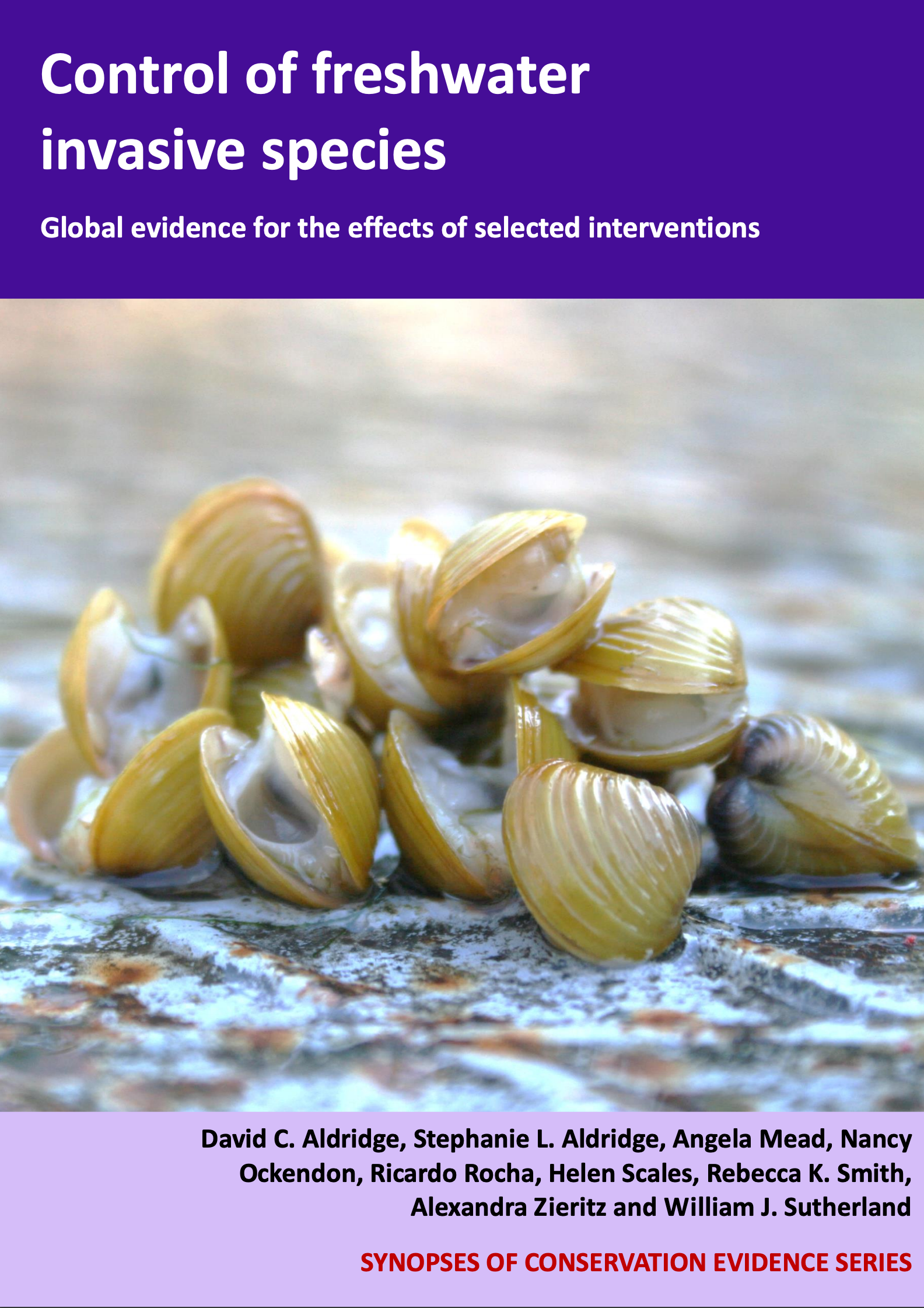Actions to conserve biodiversity
We have summarised evidence from the scientific literature about the effects of actions to conserve wildlife and ecosystems.
Review the evidence from the studies
Not sure what Actions are? Read a brief description.
Search for evidence
e.g. "frogs chytrid"
22 Actions found
Refine
Hide
22 Actions found
Download Actions
| 0 selected |
|
Order results by:
| Action | Effectiveness | Studies | Category | |
|---|---|---|---|---|
|
Crassula helmsii: Use hot water to control plants Action Link |
No evidence found (no assessment) | 0 |
|
|
|
Crassula helmsii: Biological control using fungal-based herbicides Action Link |
No evidence found (no assessment) | 0 |
|
|
|
Crassula helmsii: Biological control using herbivores Action Link |
No evidence found (no assessment) | 0 |
|
|
|
Crassula helmsii: Physical control using manual/mechanical control or dredging Action Link |
No evidence found (no assessment) | 0 |
|
|
|
Crassula helmsii: Use flame-throwers to control plants Action Link |
No evidence found (no assessment) | 0 |
|
|
|
Crassula helmsii: Plant other species to suppress growth Action Link |
No evidence found (no assessment) | 0 |
|
|
|
Crassula helmsii: Use liquid nitrogen to kill plants Action Link |
No evidence found (no assessment) | 0 |
|
|
|
Crassula helmsii: Dry out waterbodies to control plants Action Link |
No evidence found (no assessment) | 0 |
|
|
|
Crassula helmsii: Alter environmental conditions to control plants Action Link |
No evidence found (no assessment) | 0 |
|
|
|
Crassula helmsii: Bury plants Action Link |
No evidence found (no assessment) | 0 |
|
|
|
Crassula helmsii: Surround with wire mesh Action Link |
No evidence found (no assessment) | 0 |
|
|
|
Crassula helmsii: Public education Action Link |
No evidence found (no assessment) | 0 |
|
|
|
Crassula helmsii: Use dyes to reduce light levels Action Link |
Unlikely to be beneficial | 1 |
|
|
|
Crassula helmsii: Use hydrogen peroxide to control plants Action Link |
Unlikely to be beneficial | 1 |
|
|
|
Crassula helmsii: Decontamination to prevent further spread Action Link |
Beneficial | 1 |
|
|
|
Crassula helmsii: Use a combination of control measures Action Link |
Unknown effectiveness (limited evidence) | 1 |
|
|
|
Crassula helmsii: Use hot foam to control plants Action Link |
Unlikely to be beneficial | 2 |
|
|
|
Crassula helmsii: Use grazing to control plants Action Link |
Unlikely to be beneficial | 2 |
|
|
|
Parrot’s feather: Reduction of trade through legislation and codes of conduct Action Link |
Likely to be beneficial | 2 |
|
|
|
Crassula helmsii: Use salt water to kill plants Action Link |
Likely to be beneficial | 3 |
|
|
|
Crassula helmsii: Use lightproof barriers to control plants Action Link |
Likely to be beneficial | 5 |
|
|
|
Crassula helmsii: Chemical control using herbicides Action Link |
Beneficial | 7 |
|
Download Actions
| 0 selected |
|

Control of Freshwater Invasive Species - Published 2017
Control of Freshwater Invasive Species Synopsis
Watch this search
If you are familiar with RSS feeds, please click the button below to retrieve the feed URL:
RSS feed for this searchIf you are unfamiliar with RSS feeds, we would suggest reading this BBC article.
Unfortunately, due to the number of feeds we have available, we cannot provide e-mail updates. However, you could use tools such as Feed My Inbox to do this for you.
What are 'Individual studies' and 'Actions'?
Individual studies
An individual study is a summary of a specific scientific study, usually taken from a scientific journal, but also from other resources such as reports. It tells you the background context, the action(s) taken and their consequences.
If you want more detail please look at the original reference.
Actions
Each action page focuses on a particular action you could take to benefit wildlife or ecosystems.
It contains brief (150-200 word) descriptions of relevant studies (context, action(s) taken and their consequences) and one or more key messages.
Key messages show the extent and main conclusions of the available evidence. Using links within key messages, you can look at the paragraphs describing each study to get more detail. Each paragraph allows you to assess the quality of the evidence and how relevant it is to your situation.
Where we found no evidence, we have been unable to assess whether or not an intervention is effective or has any harmful impacts.





)_2023.JPG)














